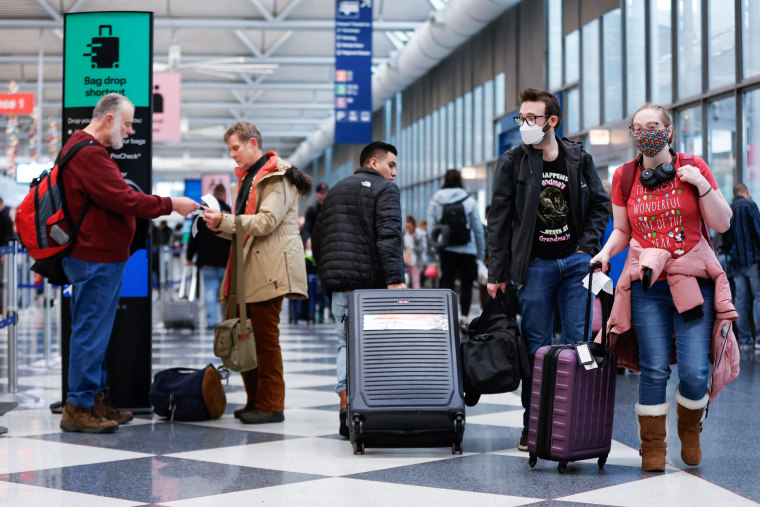The fastest-spreading coronavirus variant, JN.1, now makes up 62% of Covid cases in the U.S., according to data released Friday by the Centers for Disease Control and Prevention.
Two weeks ago, the variant made up 39% of cases, and four weeks ago, it made up 21%.
“It is making a fairly precipitous rise. There’s no question about it,” said Dr. Thomas Russo, chief of infectious diseases at the University at Buffalo Jacobs School of Medicine and Biomedical Sciences.
Wastewater data suggests that this winter’s Covid activity has surpassed last winter’s, according to preliminary CDC estimates. But the data comes with caveats: It only measures activity among people connected to a municipal sewer system and who are participating in the program. By the CDC’s count, this comes out to about 40% of the U.S. population.
In recent days, some doctors and scientists have warned that this winter’s outbreak appears to be the largest since the original omicron wave two years ago.
A CDC spokesperson said via email that it’s still too early to make accurate comparisons between JN.1’s takeover and past surges, but that “thus far its projection is similar to BA.2, which predominated in March-May 2022.”
“The original emergence of the first omicron in November/December 2021 was much more dramatic,” the spokesperson said.
Covid hospitalizations have risen since early November. New hospital admissions went up 28% in the two-week period ending Dec. 30, according to an NBC News analysis of the latest available Health and Human Services data. But they have not kept pace with the rise in infections.
“Measures of severe disease and hospitalizations are about 30% lower than they were at the same time last year. This basically means each infection is less likely to result in illness that requires medical care, which is welcoming news for our hospital systems and individuals alike,” said Katelyn Jetelina, an epidemiologist and scientific adviser to the CDC.
JN.1’s dominance suggests it is more transmissible than other strains and is driving new infections. Holiday gatherings also gave it more opportunities to spread.
“The immunity that we’ve built up from prior infection and vaccinations — unless you got the most recent formulation that came out this fall — is really waning over time,” Russo said. “That’s part of why we’re going to be at increased risk for infections with JN.1.”
The updated Covid vaccine appears to offer strong protection against severe disease caused by the new variant, according to the CDC. A preprint study found that the updated shots from Moderna and Pfizer boosted antibody protection against JN.1 up to 13 times, depending on a person’s history of vaccination and infection. The research hasn’t been peer-reviewed, though.
Both JN.1 and the variant the vaccine is designed to target — XBB.1.5 — are versions of omicron, so they have some genetic similarities. But JN.1 has more than 30 additional mutations on its spike protein compared to XBB.1.5.
Most people in the U.S. haven’t gotten an updated Covid shot — just around 8% of children and nearly 19% adults.

“If you look at right now who’s dying from Covid, it’s our seniors, particularly the 75-and-up group. But no one has zero risk, including young, healthy individuals,” Russo said. “It’s not too late to get the updated Covid vaccine.”
Russo said he does not expect JN.1 to lengthen the winter Covid wave relative to historical trends. For the last three years, Covid hospitalizations have peaked around early or mid-January.
Jetelina estimated that cases will likely reach their highest point next week.
“When you’re at the top of the peak, you still have to go down the hill. So that really means we’re only halfway through the Covid wave,” she said.






